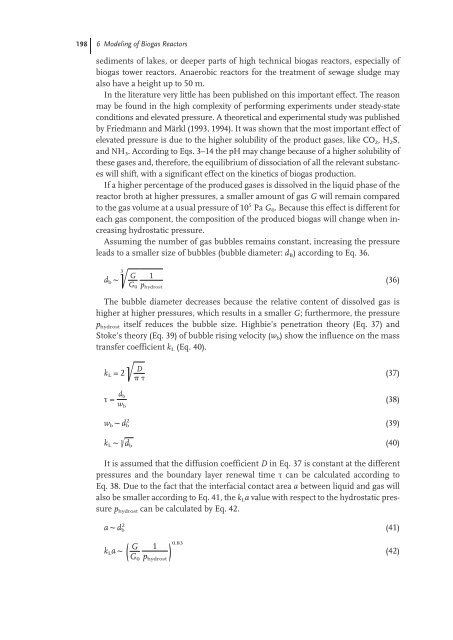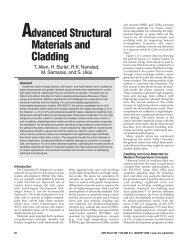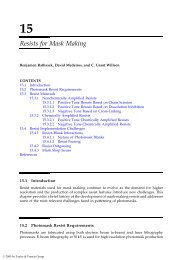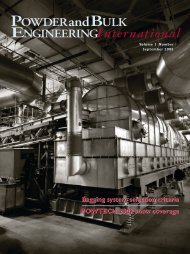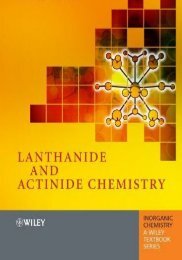Modeling of Biogas Reactors
Modeling of Biogas Reactors
Modeling of Biogas Reactors
Create successful ePaper yourself
Turn your PDF publications into a flip-book with our unique Google optimized e-Paper software.
198 6 <strong>Modeling</strong> <strong>of</strong> <strong>Biogas</strong> <strong>Reactors</strong><br />
sediments <strong>of</strong> lakes, or deeper parts <strong>of</strong> high technical biogas reactors, especially <strong>of</strong><br />
biogas tower reactors. Anaerobic reactors for the treatment <strong>of</strong> sewage sludge may<br />
also have a height up to 50 m.<br />
In the literature very little has been published on this important effect. The reason<br />
may be found in the high complexity <strong>of</strong> performing experiments under steady-state<br />
conditions and elevated pressure. A theoretical and experimental study was published<br />
by Friedmann and Märkl (1993, 1994). It was shown that the most important effect <strong>of</strong><br />
elevated pressure is due to the higher solubility <strong>of</strong> the product gases, like CO 2, H 2S,<br />
and NH 3. According to Eqs. 3–14 the pH may change because <strong>of</strong> a higher solubility <strong>of</strong><br />
these gases and, therefore, the equilibrium <strong>of</strong> dissociation <strong>of</strong> all the relevant substances<br />
will shift, with a significant effect on the kinetics <strong>of</strong> biogas production.<br />
If a higher percentage <strong>of</strong> the produced gases is dissolved in the liquid phase <strong>of</strong> the<br />
reactor broth at higher pressures, a smaller amount <strong>of</strong> gas G will remain compared<br />
to the gas volume at a usual pressure <strong>of</strong> 10 5 Pa G 0. Because this effect is different for<br />
each gas component, the composition <strong>of</strong> the produced biogas will change when increasing<br />
hydrostatic pressure.<br />
Assuming the number <strong>of</strong> gas bubbles remains constant, increasing the pressure<br />
leads to a smaller size <strong>of</strong> bubbles (bubble diameter: d B) according to Eq. 36.<br />
;<br />
3<br />
dbF The bubble diameter decreases because the relative content <strong>of</strong> dissolved gas is<br />
higher at higher pressures, which results in a smaller G; furthermore, the pressure<br />
p hydrost itself reduces the bubble size. Highbie’s penetration theory (Eq. 37) and<br />
Stoke’s theory (Eq. 39) <strong>of</strong> bubble rising velocity (w b) show the influence on the mass<br />
transfer coefficient k L (Eq. 40).<br />
D<br />
kL = 2 (37)<br />
� �<br />
db wb ô = (38)<br />
w bFd b 2<br />
k LF (40)<br />
It is assumed that the diffusion coefficient D in Eq. 37 is constant at the different<br />
pressures and the boundary layer renewal time ô can be calculated according to<br />
Eq. 38. Due to the fact that the interfacial contact area a between liquid and gas will<br />
also be smaller according to Eq. 41, the k La value with respect to the hydrostatic pressure<br />
p hydrost can be calculated by Eq. 42.<br />
aFd b 2<br />
k LaF<br />
G<br />
G 0<br />
;<br />
;d b<br />
(<br />
G<br />
G 0<br />
1<br />
p hydrost<br />
1<br />
p hydrost<br />
)<br />
0.83<br />
(36)<br />
(39)<br />
(41)<br />
(42)


